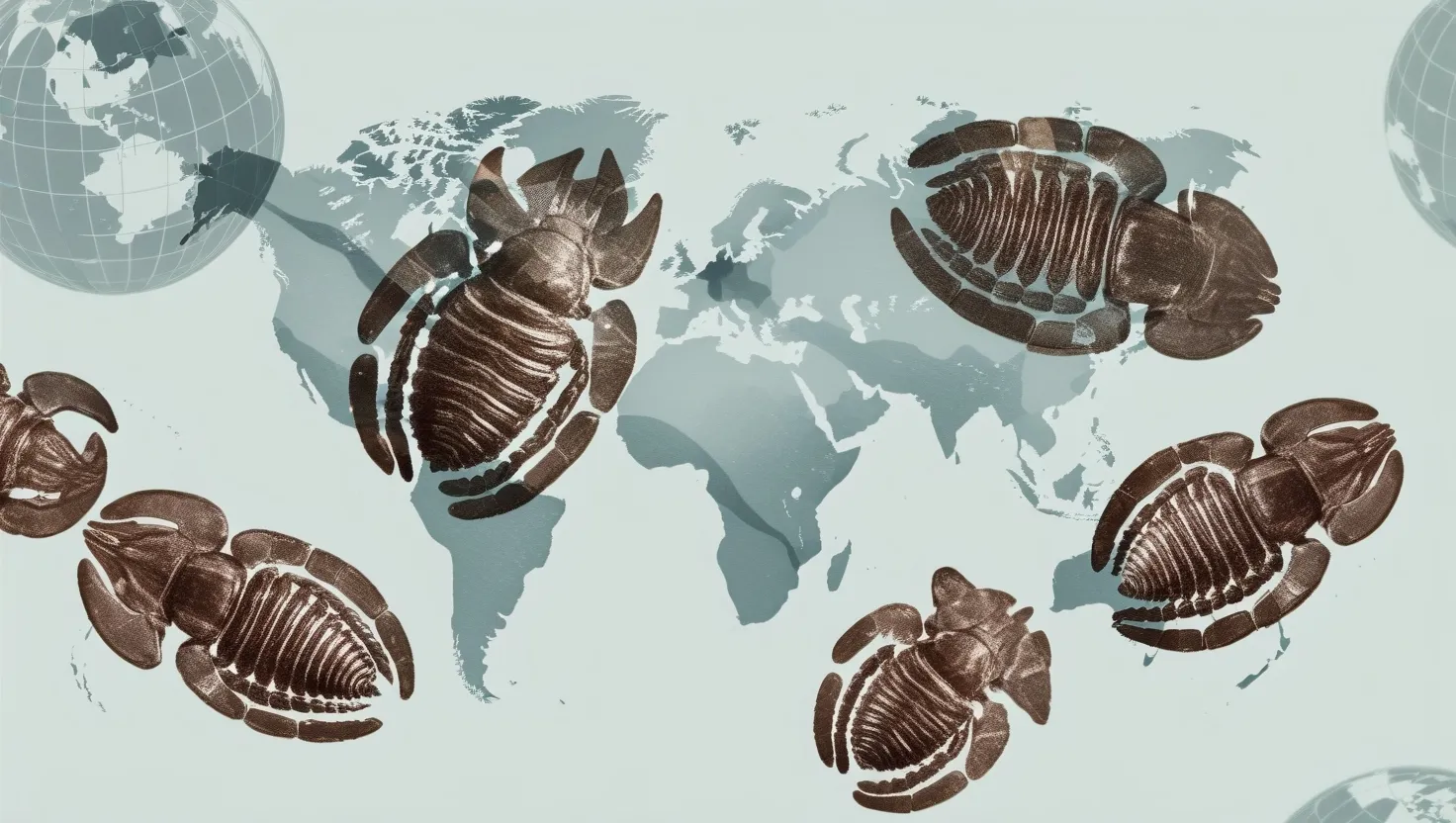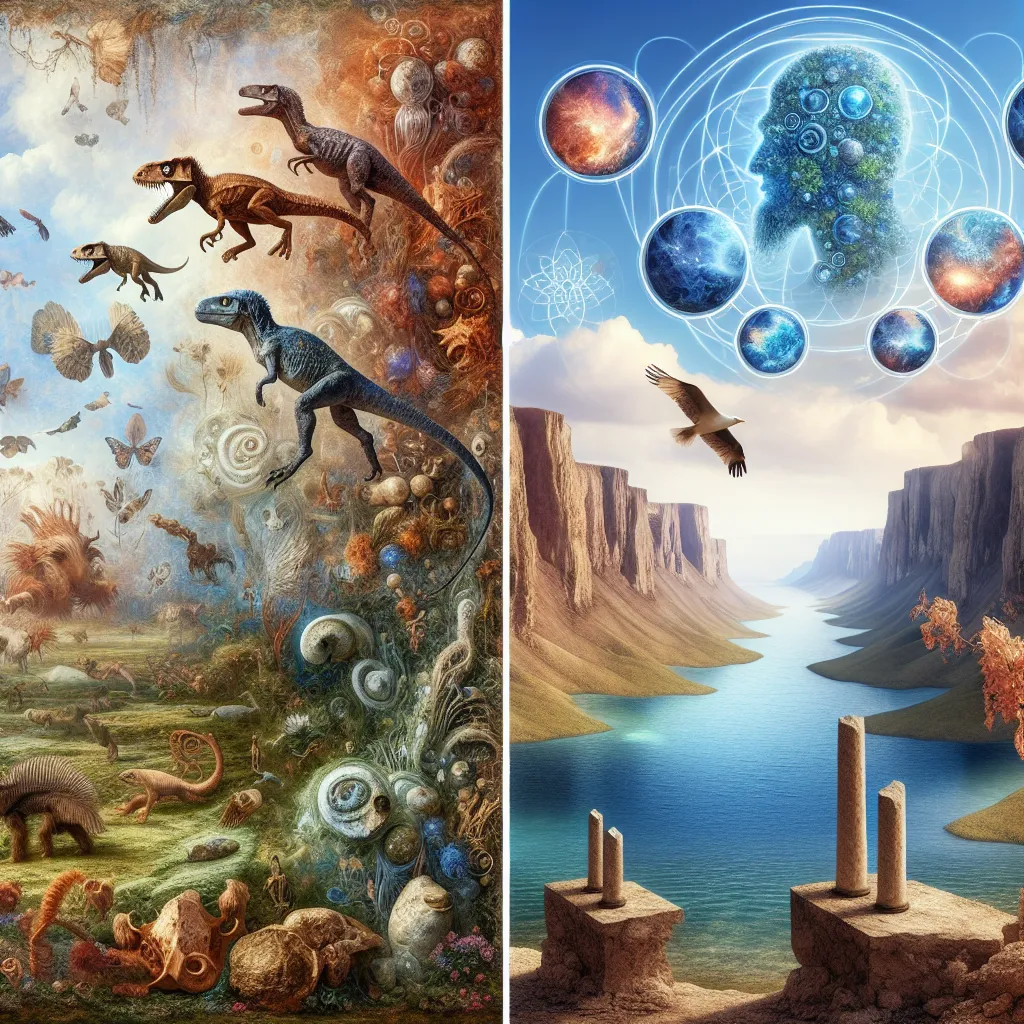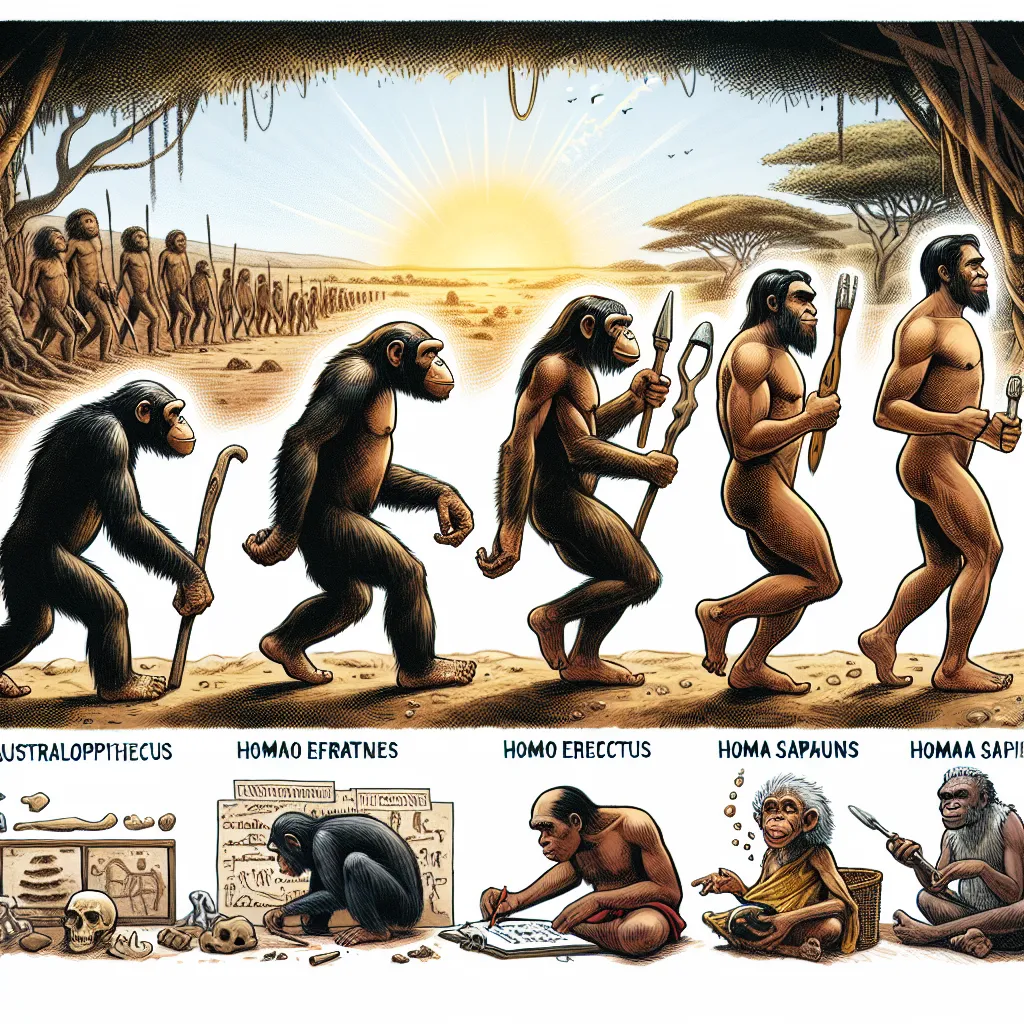When we think about fossils, we often picture them as static snapshots of the past, frozen in time and stone. However, a fascinating and somewhat mind-bending theory suggests that these ancient remains might be more than just simple imprints. What if fossils could act as quantum records, preserving traces of multiple historical timelines? This idea, though still highly speculative, opens up a realm of intriguing possibilities and challenges our conventional understanding of the fossil record.
To delve into this concept, let’s start with the basics. Fossils are formed when organisms or their traces, like footprints, are buried under layers of sediment. Over time, these sediments compact and cement together, preserving the shapes and sometimes even the details of the organisms. However, the process of fossilization is rare; only a tiny fraction of the organisms that have ever lived are preserved in this way.
Now, imagine if these fossils were not just passive records but active repositories of quantum information. In the realm of quantum mechanics, particles can exist in multiple states simultaneously, a phenomenon known as superposition. This concept has been demonstrated in various experiments, including the famous thought experiment by Eugene Wigner, which highlights the paradoxical nature of observation in quantum mechanics.
Applying this to fossils, the theory proposes that these ancient remains could be preserving not just one historical timeline but multiple ones. This would mean that the fossils we find today might be echoes of different evolutionary paths or even glimpses of parallel Earth histories. It sounds like science fiction, but let’s explore how this idea could explain some of the anomalies we see in the fossil record.
One of the most compelling examples is the distribution of certain fossils across the globe. For instance, the trilobite genus Paradoxides is found in rocks from Eastern Canada, Sweden, Wales, the Czech Republic, and Morocco. These locations are now thousands of miles apart, but the fossils of these trilobites are virtually identical. The conventional explanation is that these continents were once joined together and have since drifted apart due to plate tectonics. However, the quantum fossils theory offers an alternative perspective: what if these trilobites were living in different timelines or parallel universes, and their fossils are a cross-over between these realities?
Another anomaly is the abundance of footprints in the fossil record compared to bones. While bones are rare and often fragmented, footprints are surprisingly common. This could be because footprints are more likely to be preserved under the right conditions, such as being quickly buried by sediment. But what if these footprints are not just from our timeline? What if they are imprints from different versions of history, where different species or even different versions of the same species walked the Earth?
The idea of quantum fossils also raises questions about the nature of reality and our understanding of time. If fossils can preserve multiple timelines, it suggests that time is not linear but rather a complex web of possibilities. This aligns with some theories in quantum mechanics that propose the existence of a multiverse, where every possible outcome of every event creates a new universe.
Decoding these quantum fossils, if they exist, would be an enormous challenge. It would require a deep understanding of both paleontology and quantum mechanics. However, the potential rewards are immense. Imagine being able to see glimpses of roads not taken, of evolutionary paths that did not lead to the diversity of life we see today. It would be like uncovering a hidden library of alternate histories, each one offering insights into what could have been.
Of course, this theory is highly speculative and currently lacks empirical evidence. It is more of a thought experiment than a scientific fact. However, it does highlight the complexity and mystery of the fossil record. Even without the quantum twist, fossils are incredible windows into the past, revealing how life on Earth has evolved over billions of years.
For example, the preservation of dinosaur trackways and human footprints under layers of sediment shows how local conditions can lead to the fossilization of even ephemeral traces. These finds challenge certain alternative geological models, such as young Earth creationism, which struggle to explain the vast number of footprints preserved over millions of years.
In conclusion, while the idea of quantum fossils preserving multiple historical timelines is intriguing, it remains a topic of speculation rather than scientific fact. However, it encourages us to think creatively about the fossil record and the mysteries it holds. Whether or not these fossils are quantum records, they are undeniably valuable for understanding our planet’s history and the evolution of life.
As we continue to explore and study fossils, we may uncover more anomalies and inconsistencies that challenge our current understanding. Perhaps one day, we will find evidence that supports the idea of quantum fossils, revealing a treasure trove of multiversal information hidden in the rocks. Until then, the fascination with fossils remains a powerful driver for scientific inquiry and imagination, reminding us that there is always more to discover about the ancient world and its secrets.






